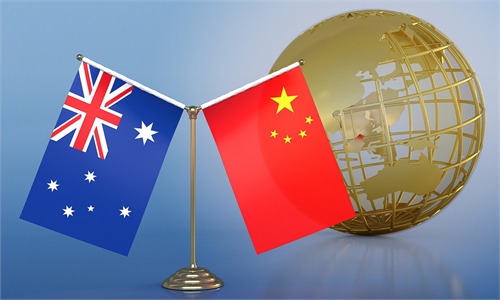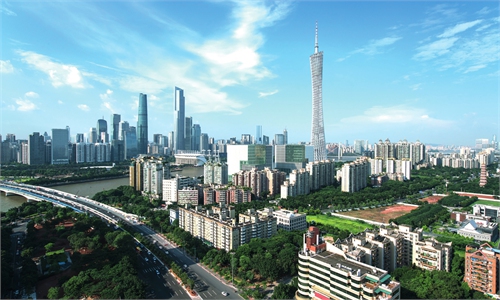

A view of the skyline of Beijing's CBD area. Photo: VCG
Currently, there are two main categories of concerns regarding the Chinese economy overseas. The first is whether the Chinese economy has peaked. The second is how China is handling various pressures and challenges.First and foremost, it is crucial to understand that China's economy has by no means reached its peak, as the per capita income in China is only about 25 percent of that in the US, whereas in the 1990s, Japan's per capita income had already reached around 80 percent of the US level.
China's population is 11 times larger than Japan's population in the 1990s, making China's economy the largest unified market in the world. Within such a vast market, there is significant domestic demand that needs to be further explored and unleashed.
China's high savings rate of around 45 percent provides the country with ample funds to address various issues.
In China, there are 4.4 million engineering graduates produced every year, specializing in fields such as mechanical engineering, electrical engineering, and power engineering. This means that China has a large number of engineers entering the market each year, surpassing the total number of engineering graduates in almost all other countries combined.
Additionally, China's urbanization rate is only 66 percent, with 34 percent of the population still living in rural areas. Many of these individuals aspire to join the urban population and contribute to the country's urbanization process.
How to solve the issues in the real estate market? Indeed, both sales and prices of real estate are declining, but there are two simple facts. First, the savings rate is still very high, meaning there is a large amount of long-term capital available to help address the financial issues facing the real estate industry. Second, it is important to remember that 34 percent of the population lives in rural areas, and many are willing to move to cities. This is completely different from the situation in Japan in the 1990s when the market was already saturated.
Local governments indeed are burdened by heavy debt, but it should not be forgotten that the money are borrowed to build local infrastructure, which prepares local markets to attract businesses and obtain tax revenue from new enterprises to repay its debts. So the debt repayment period should be extended, which is exactly what the government is doing. In this year's Government Work Report, it is proposed that, starting this year and over each of the next several years, ultra-long special treasury bonds be issued. These bonds will be used to implement major national strategies and build up security capacity in key areas. One trillion yuan of such bonds will be issued in 2024. In my opinion, one trillion yuan may not be enough. The demand for such long-term bonds is enormous, both domestically and internationally.
Domestic demand is also a challenge facing the Chinese economy, but it should be recognized that the government is implementing a series of policies to address this issue. One type of policy is the trade-in of old for new, such as policies for durable goods and bulk household appliances, which are crucial.
However, another type of policy that will become increasingly important in the coming years is that China's public finance will increasingly lean toward social welfare. This trend is already evident. It involves strengthening public health, basic education, preschool education, childcare, and more, which will further unleash Chinese families' consumption potential.
Policies are also being formulated in this direction. I am optimistic that the proportion of consumption will continue to increase steadily in the future. China's per capita income currently only accounts for 25 percent of that of the US. China's per capita income has just reached the global average level, so there is still a lot of room for growth in this area, with the greatest potential in consumption.
The Chinese economy has not yet peaked and still has great potential for further growth. The Chinese government has a wide range of tools at its disposal to address various issues and is actively engaged in relevant work. The key to addressing the challenges facing the Chinese economy is to continue its growth, just like cycling we need to pedal hard and move forward, which can help solve problems. That is what the central government has been doing especially since the Central Economic Work Conference last year.
It is normal for the GDP growth fluctuates in a range, given the large size of the Chinese economy and the many challenges it faces, including some imported from overseas. The fluctuation range is likely between 4.6 to 5.8 percent based on our estimate. The Chinese government is balancing various economic goals and reading different gauges, with growth speed being just one of the indicators.
The article was compiled based on a speech delivered by Li Daokui, director of Tsinghua University's Academic Center for Chinese Economic Practice and Thinking (ACCEPT), at the Ambassador Round Table Dialogue on "China's Economic Outlook" in Beijing. bizopinion@globaltimes.com.cn



